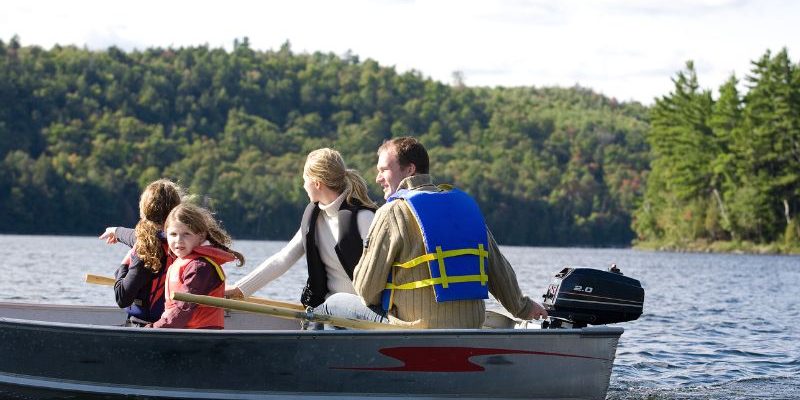Selecting the appropriate life jacket is an essential part of water safety. Whether you’re an experienced boater or a casual kayaker, understanding the different types of life jackets and knowing how to choose the right one can mean the difference between life and death on the water.
Let’s delve into the various types of life jackets available and offer practical advice on making an informed choice.
Different Types of Life Jackets
- Offshore Life Jackets (Type I): These jackets provide the highest level of buoyancy and are designed for open, rough, or remote waters where rescue may be delayed. They can turn an unconscious person face up in the water.
- Near-Shore Buoyant Vests (Type II): Suitable for calm, inland waters where a quick rescue is likely. They are less bulky than Type I vests but may not turn an unconscious wearer face up.
- Flotation Aids (Type III): These are often used for watersports and are more comfortable to wear for extended periods. They are designed for calm waters with a high probability of quick rescue but are not required to turn an unconscious person face up.
- Throwable Devices (Type IV): Intended for use in emergencies, these devices are thrown to a person in the water and are not designed to be worn.
- Special Use Devices (Type V): Specific activities such as kayaking, windsurfing, or cold-weather operations often require these specialized life jackets. They must be worn to be considered effective.
How to Choose the Right Life Jacket?
Selecting the right life jacket involves several key considerations:
REQUIREMENTS
- U.S. Coast Guard approved wearable life jackets on board for every person on the boat.
- Boating safety advocates recommend all boaters and passengers wear a life jacket at all times while boating.

READ THE LABEL
- All life jackets that are USCG-approved have an approval number. Look for it to ensure your life jacket meets the law requirements and is safe.
- You may see a new label on the inside of new life jackets with a performance-level icon. These are approved for use in the U.S. and Canada, whereas devices with the old labels continue to be approved in one country or the other, not both.
- Life jackets you may already own may have the old “type” life jacket label (Type I–Type V).
- The new label DOES NOT make obsolete life jackets with the old label (you can continue to use your life jacket as long as it is in good condition and appropriate for the activity).

RIGHT LIFE JACKET
- WEAR IT—The best life jacket is one you will wear.
- ACTIVITY—It should be appropriate for recreational water activity.
- FIT—A snug fit is a proper fit. All straps, buckles, and zippers should be secure.
- CONDITION—Life jackets with a tear, broken pieces, or buoyancy loss should be disposed of.

Source: https://safeboatingcampaign.com/
Life Jackets for Different Demographics
Be sure it’s U.S. Coast Guard-approved by checking the label printed on the inside of the life jacket.
- Standup Paddlers (Belt-pack inflatable)

- They are less bulky than traditional life jackets, which makes them ideal for standup paddlers who need freedom of movement.
- These life jackets are worn around the waist like a belt, allowing paddlers to paddle without the restriction of a full vest.
- They can be manually inflated by pulling a cord or automatically activated when submerged in water. This feature ensures that the life jacket remains unobtrusive until needed.
- Anglers & Open Motor Boats (Suspender inflatable)

- They are worn over the shoulders like suspenders, providing comfort and a full range of motion for casting or steering.
- Offer high buoyancy levels when inflated and many come with pockets and attachment points for gear, making them practical for anglers who need easy access to their tools and tackle.
- Personal Water Crafts & Water Sports (Inherently buoyant)

- Provides instant flotation without the need for inflation. This is crucial for activities like jet skiing, wakeboarding, or water skiing, where falls into the water are common and immediate buoyancy is essential.
- Designed to withstand high impact and frequent immersion, making them robust for high-energy water sports.
- They often come with additional safety features such as bright colors, reflective strips, and secure straps to ensure the jacket stays in place during vigorous activities.
- Kids (Adult life jackets don’t fit kids)

- These life jackets are designed to be comfortable and often come in fun colors and designs to encourage kids to wear them willingly.
- Features like padded head support and crotch straps help keep the child’s head above water and ensure a secure fit.
- Pets (Harness with lift handles)

- The harness with lift handles allows owners to easily lift their pets out of the water if they fall in or need assistance.
- These jackets can be adjusted to fit snugly around the pet’s body, ensuring comfort and preventing them from slipping out.
Conclusion
In summary, investing in the correct life jacket for every member of your family, including pets, ensures a higher level of safety during water activities.
It involves paying attention to fit, buoyancy, activity-specific features, and regulatory compliance. By understanding these factors, you can significantly enhance safety and enjoyment on the water.
For added convenience in planning your water adventures, consider downloading the FishVerify app. The app helps verify fish species and regulations, so Download the FishVerify app today to make your next fishing or boating trip safer and more enjoyable!


